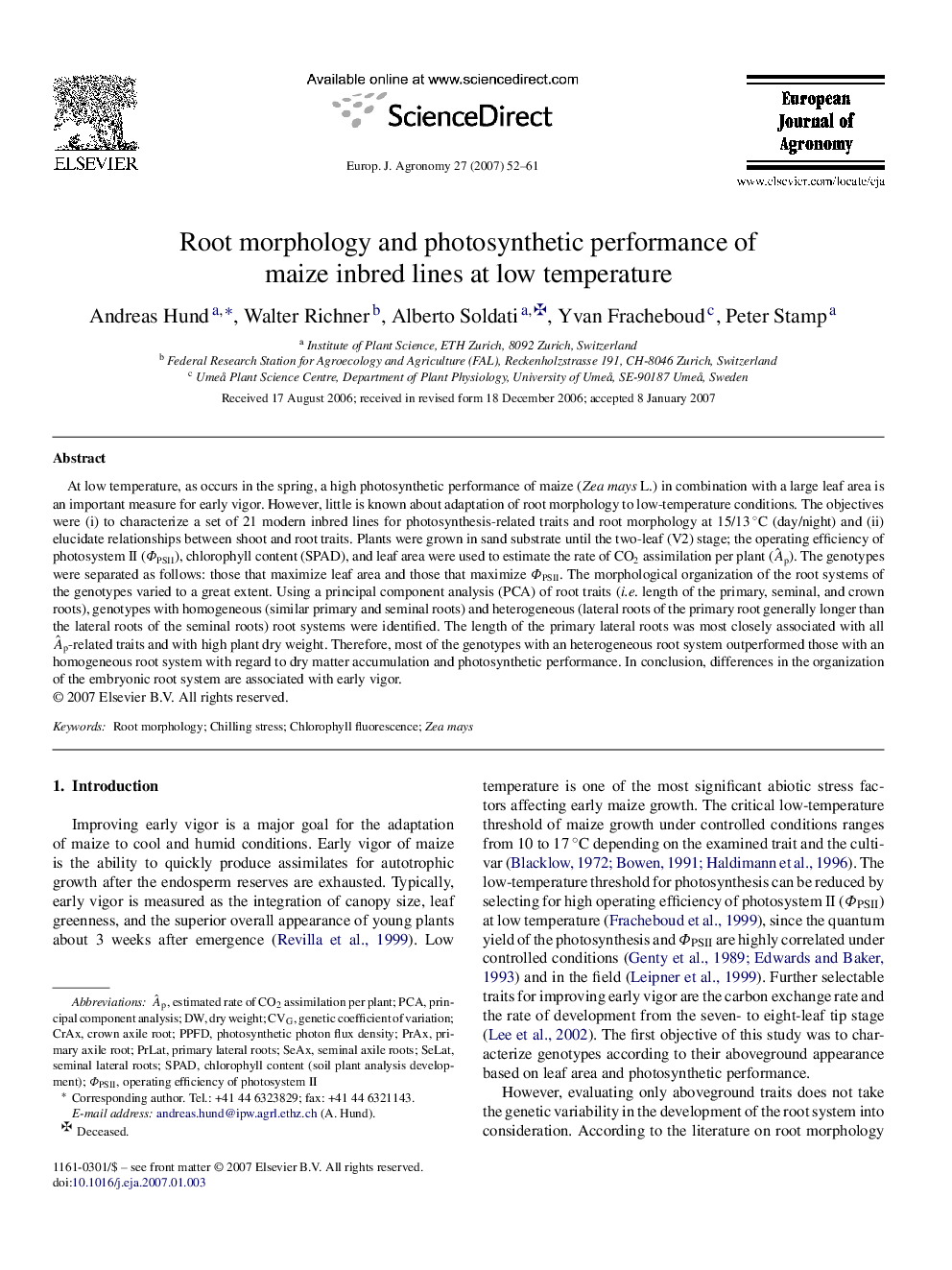| Article ID | Journal | Published Year | Pages | File Type |
|---|---|---|---|---|
| 4509574 | European Journal of Agronomy | 2007 | 10 Pages |
At low temperature, as occurs in the spring, a high photosynthetic performance of maize (Zea mays L.) in combination with a large leaf area is an important measure for early vigor. However, little is known about adaptation of root morphology to low-temperature conditions. The objectives were (i) to characterize a set of 21 modern inbred lines for photosynthesis-related traits and root morphology at 15/13 °C (day/night) and (ii) elucidate relationships between shoot and root traits. Plants were grown in sand substrate until the two-leaf (V2) stage; the operating efficiency of photosystem II (ΦPSII), chlorophyll content (SPAD), and leaf area were used to estimate the rate of CO2 assimilation per plant (Aˆp). The genotypes were separated as follows: those that maximize leaf area and those that maximize ΦPSII. The morphological organization of the root systems of the genotypes varied to a great extent. Using a principal component analysis (PCA) of root traits (i.e . length of the primary, seminal, and crown roots), genotypes with homogeneous (similar primary and seminal roots) and heterogeneous (lateral roots of the primary root generally longer than the lateral roots of the seminal roots) root systems were identified. The length of the primary lateral roots was most closely associated with all Aˆp-related traits and with high plant dry weight. Therefore, most of the genotypes with an heterogeneous root system outperformed those with an homogeneous root system with regard to dry matter accumulation and photosynthetic performance. In conclusion, differences in the organization of the embryonic root system are associated with early vigor.
